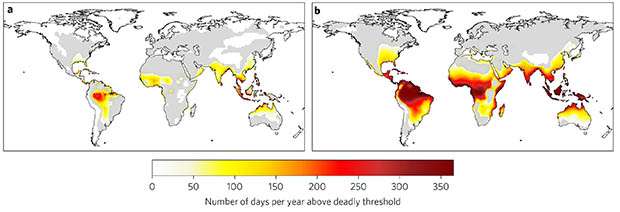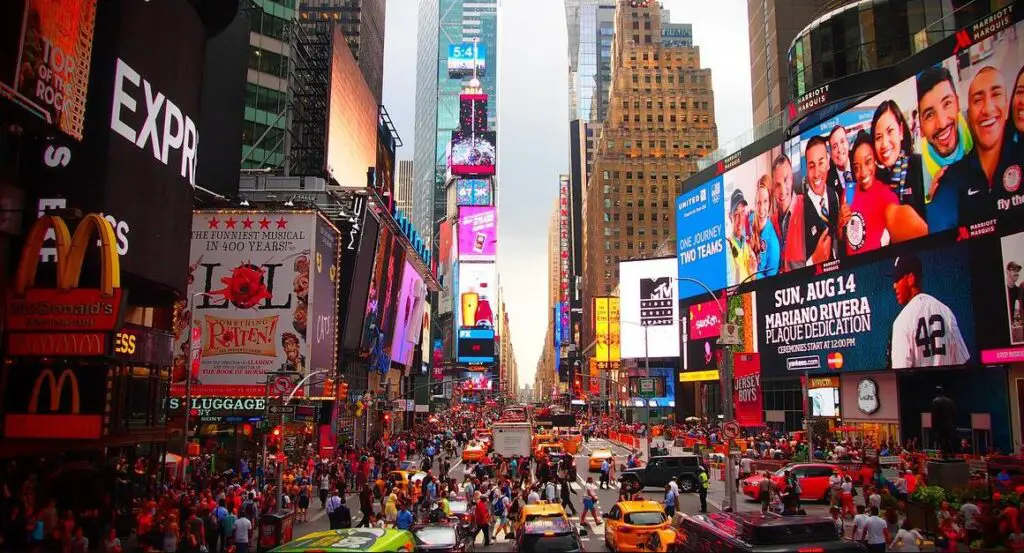As India experiences extreme temperatures for two months, the University of Hawaii estimates that 74% of the human population could face deadly heat waves by 2100 if greenhouse gas emissions continue to increase at the same rate.
India and Pakistan recently faced temperatures approaching 50°C for several days. Although the real impact on mortality has not yet been communicated, the Indian health services have already estimated that the number of people killed by heat in India since 1967 amounts to at least 40,000.
This number is probably greatly underestimated given India’s difficulty in obtaining data on the health of its poorest and most isolated population.
The reference heat wave in Europe, that of the summer of 2003, had been responsible for the death of at least 70,000 people (including 15,000 in France) in the duration of a month and a half. In 2010, the heat wave in Russia caused the death of at least 10,000 people in Moscow.
48-74% of population at risk of fatal heat by 2100
The human body cannot function normally with an internal temperature above approximately 37°C, and heat waves , especially when combined with humidity, can cause body temperature to rise significantly above this.
The conclusions of the University of Hawaii, published in the journal Nature Climate Change , tend towards a particularly dark scenario for Humanity.
Three-quarters of the world’s population could die of heat within 80 years if the climate continues to warm at the same rate . If humanity decided in the meantime to reduce its greenhouse gas emissions drastically, this alarming figure would then drop to 48% according to the researchers’ estimates.
Currently, the university estimates that 30% of the population is exposed to at least 20 days of life-threatening heat per year. “ As far as heat waves are concerned, we have the choice between a bad future scenario, or a terrible one,” according to the study’s lead author, Camilo Mora.

New York and London will also see their hot days explode
Areas with a tropical climate will be the most at risk , because humid heat is present there all year round, unlike areas located further north where these weather conditions are only present in summer. Additionally, the temperature is already naturally high in the tropics , so all it takes is a mere slight rise to bring the heat to a deadly threshold.
If heat waves are obviously much more deadly in countries that do not have enough access to air conditioning, they also kill in large modern cities.
Among the major cities that have experienced a high death rate during the last heat waves, our findings: New York, Washington, Los Angeles, Chicago, Toronto, London, Beijing, Tokyo, Sydney and São Paulo.
Although located in the northern United States, New York City could experience 50 life-threatening heat days per year by 2100. This number of high-risk days for human health will rise to 30 per year for Los Angeles and 20 per year for Sydney in Australia. For American cities that already benefit from a hot and humid climate, such as Orlando in Florida and Houston in Texas, the number of days of deadly heat by 2100 could exceed 90, that is to say the whole summer!

In the city, as in the countryside, the heat is devastating
The most isolated populations are those with the least access to air conditioning (which further contributes to greenhouse gas emissions), and access to healthcare. But in big cities, like Paris or New York, the urban heat island phenomenon is wreaking havoc.
During the 2003 heat wave in Europe, elderly women, sedentary and alone, were the first victims. Just behind, men aged 25 to 64, due to the fact that the majority of them work outdoors.
In addition to the direct effects of heat on the risk of mortality, indirect consequences increase the health risks: the development of viruses and vector-borne diseases (linked to mosquitoes in particular) in hot and humid areas, but also the risks linked to the dangerous mixture of heat and ozone pollution .
Faced with these threats, there is only one solution, to historically reduce our greenhouse gas emissions. A change that has not yet been initiated since CO 2 and methane emissions have again reached a record level in 2021 .
Read more here: Global risk of deadly heat
(Image Source: Unsplash and Image by Andreas H. from Pixabay)





